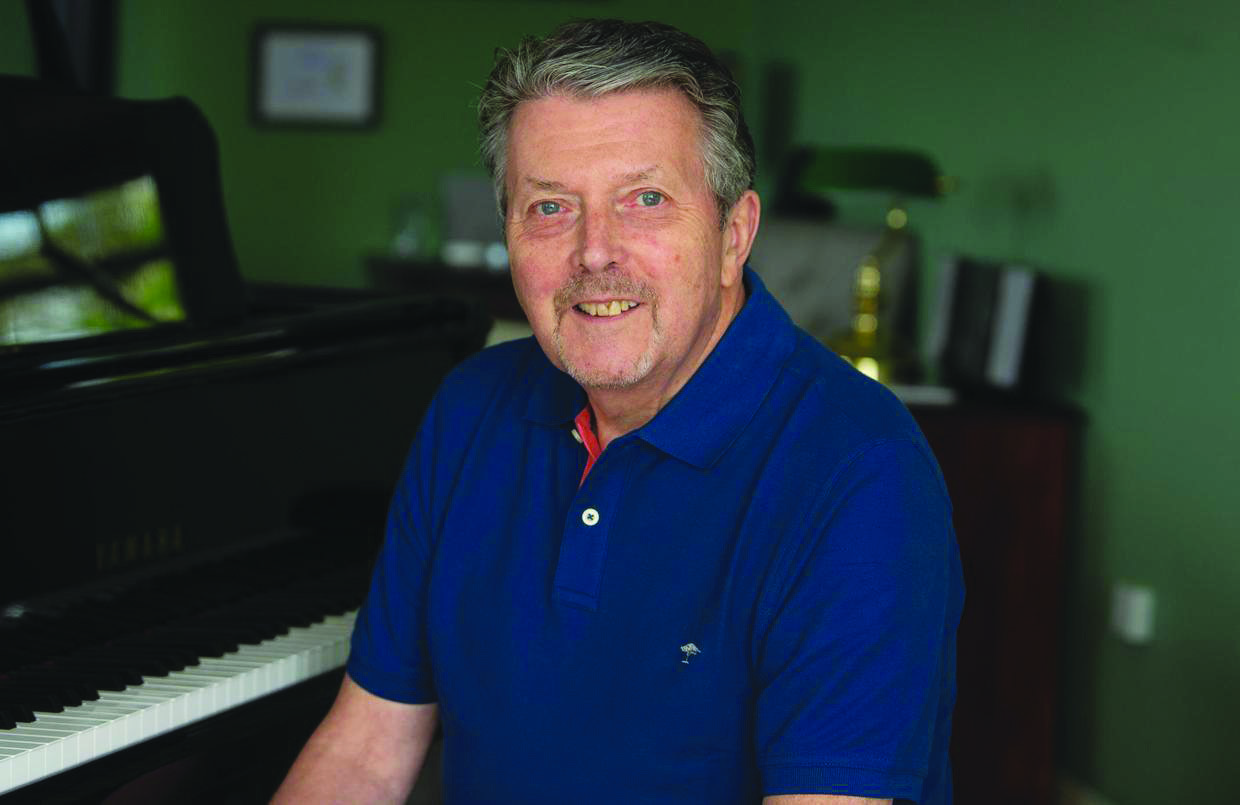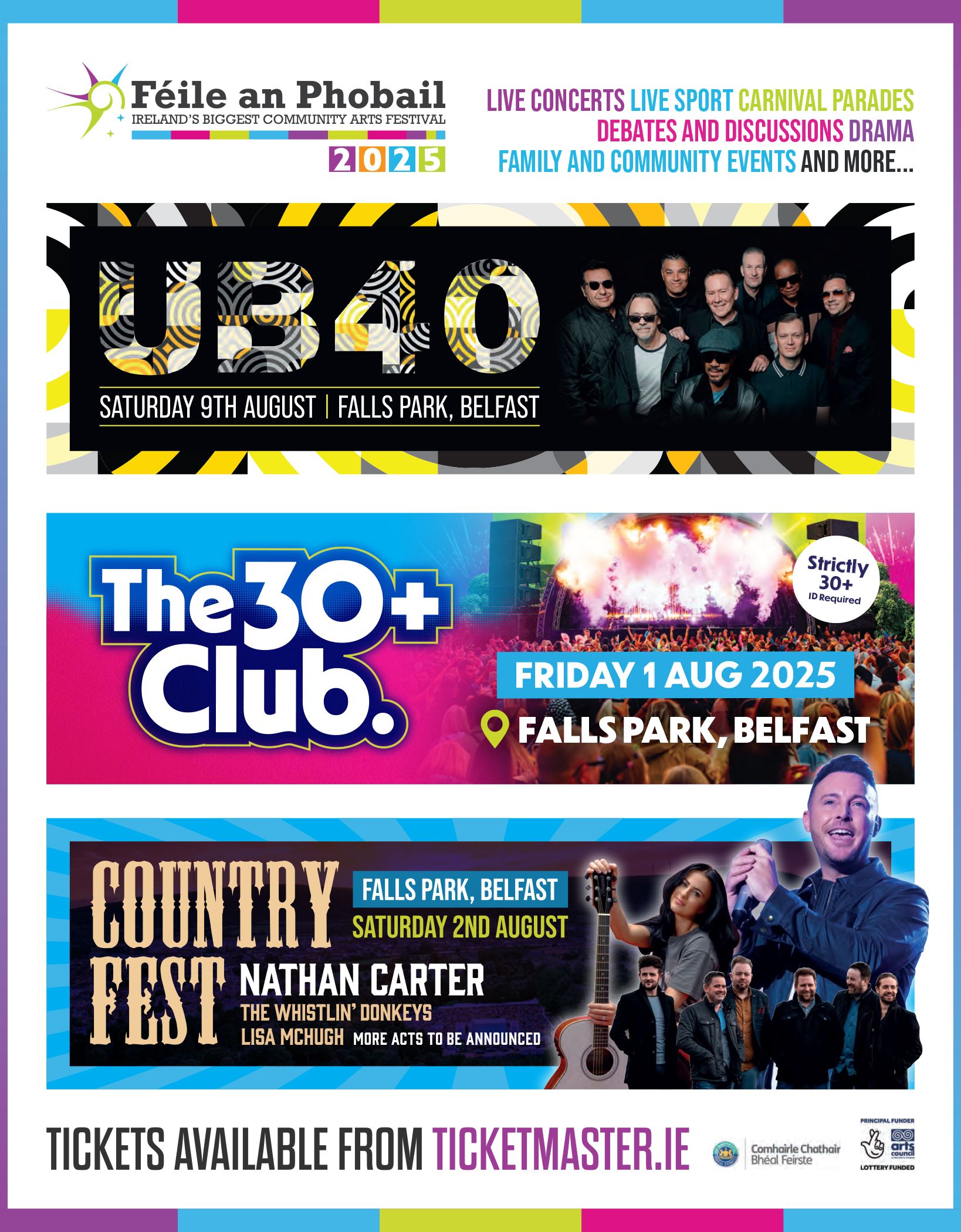IT remains one of Irish sports most iconic quotes and for those of a certain middle-aged vintage and above, June 25, 1990 is one of those days that will bring back the fondest of memories.
Everyone remembers where they were on that Monday afternoon as a World Cup Last 16 game between the Republic of Ireland and Romania moved into a nerve-shredding penalty shootout as 120 minutes had failed to produce a goal.
High up in the stands of the Luigi Ferraris Stadium in Genoa was George Hamilton, RTÉ commentator whose job it was to guide the viewers at home through the spot-kicks and when Pat Bonner, “the big man from Donegal set it up for the victory,” after saving from Daniel Timofte, up-stepped David O’Leary to send the Boys in Green into a quarter-final with Italy in Rome the following Saturday.
“This kick can decide it all... the nation holds its breath... yes, we’re there!”
George Hamilton’s journey began on the Cregagh Road and last Thursday, he arrived at a thronged Waterstones Bookstore on Fountain Street in his home city as he and Ray Houghton, former Irish international who produced some of his own iconic moments with winning goals against England at Euro 88 and Italy at the 1994 World Cup, launched Hamilton’s autobiography: ‘The Nation Holds Its Breath’.
“It was the publisher, Conor Graham from Merrion Press, who contacted me and asked would I consider doing a book,” explained the veteran broadcaster who has provided the commentary of countless memorable moments in Irish and world sport.
“I liked the idea because it was to be about whatever I wanted it to be, but he then gave me the title and said there’s only one thing we can call it.
“I had to stop and think: ‘well, if that’s the title and people know what that represents, then I have to explain how somebody from my background and the unusual journey I took ended up uttering those words in those circumstances’.”
Born in January 1950, Hamilton was Christened in the same Presbyterian church as George Best and this was perhaps something of an omen as to the path his life would traverse.
His father, Jim, was a former Cliftonville player and a young George would accompany him to games as a youngster where his love of the beautiful game was fostered.
At this time, the Solitude club and its handful of supporters had little to shout about, yet a fire was lit that would prove to be a catalyst for what was to come.
“I was following Cliftonville because my dad played for them in the ‘30s,” he recalled when speaking to belfastmedia.com after Thursday’s launch.
“They were an amateur team and won very little in terms of matches never mind trophies and were always having to reapply for re-election (to the league).
“Solitude was the most aptly-named ground around as there was never a crowd and a safe place to take a young kid, but I fell in love with football through Cliftonville.”
A fan of a losing team, especially as an adolescent, was never a good look, so while he retained a love for The Reds and was commentator in 1979 when the North Belfast club last won the Irish Cup, it was the club a bit closer to home that would soon capture his attention.
“When I was growing up in my teens, it didn’t look good for the street cred following a team that wasn’t winning things,” he continued.
“With me from East Belfast, it seemed a no-brainer - I had no time for The Blues (Linfield) - that it had to be the Glens, so I became a Glentoran fan and really enjoyed that time in my life as it coincided with John Colrain as player-manager who had played for Celtic.
“Players like Terry Conroy - a really exciting winger - and the whole vibe around The Glens when they went to the States and played the Detroit Cougars... They were just a great team to follow and Cliftonville still hadn’t arrived yet.
“But as Ken Reid, the former UTV political correspondent and a great friend of mine said: ‘Once a Red man, always a Red man’, even if I was a Glen man, I still had to hold onto that.”
Hamilton would attend Methodist College, a rugby hotbed where soccer was frowned upon, so it was the oval ball that would form part of his sporting life.
However, his talents were diverse, and he developed a love of music, playing in the school orchestra that would be another facet of his life that would come into play in later years as he now also presents a classical music programme on RTÉ Lyric FM on Saturdays and Sundays called The Hamilton Scores.
But sport was his first love and after graduating from Queen’s University, a career in sports broadcasting was high on his agenda.
“Football was always my sport but I never got to play it (at school),” he recalls.
“I played rugby because that what there and they frowned on you playing football, which nobody did. That is quite sad in a way, but I enjoyed rugby and it was rugby that gave me the break into broadcasting because when I made my approach into the BBC to see if there was a way in, they said that whatever you do, don’t do football as they were oversubscribed so I had the rugby to go back to.
“The first broadcast I ever did was a rugby report and then I did some rugby commentary that ended up getting me into the football commentary.
“I have always had the view that you take whatever opportunity you are given so it wasn’t a case of ‘I’m not going to do rugby because I want to do football’. I thought that I’m going to get in here and see what I can make of it. Had I not, the football may never have arisen, but fortunately it did.”
With the legendary Johnny Giles in the commentary box at the old Lansdowne Road back in 2000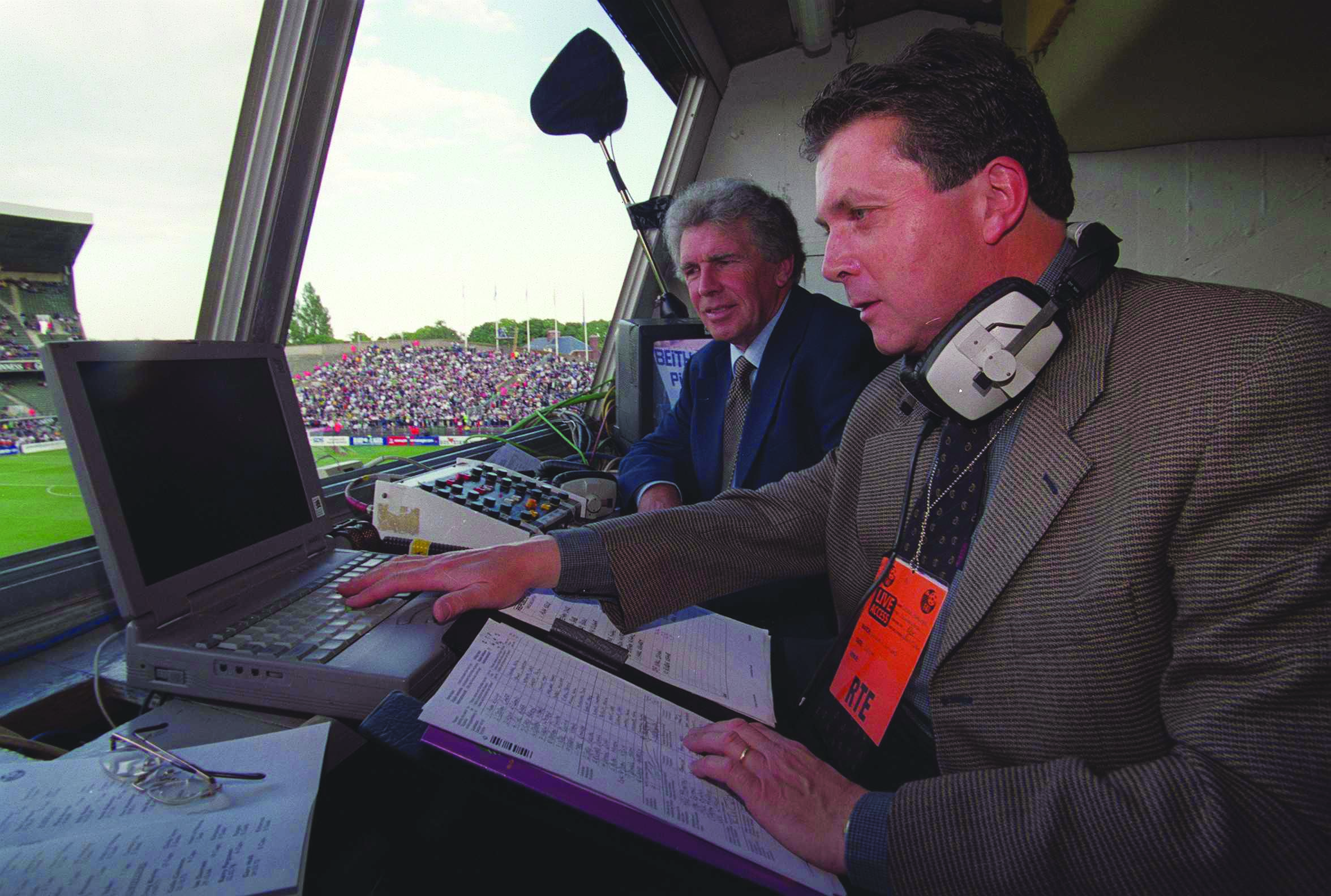
Hamilton would work with the BBC and then was then given the opportunity to cover the 1978 World Cup in Argentina for RTÉ that proved to be the beginning of his career with the national broadcaster.
While the Belfast man was becoming an established voice, Irish football was still a long way from the glory days in the early 1980s, but that would all change in 1986 with the arrival of Jack Charlton as manager.
Unprecedented success would follow as Ireland qualified for its first major tournament in 1988 - the European Championships in West Germany and it just had to be England in the first game.
Ray Houghton’s eighth-minute header would be enough to seal a famous victory and while a bizarre late winner from the head of Wim Kieft ultimately sent eventual winners Netherlands through at Ireland’s expense, that summer would not just prove the first of many golden moments for Hamilton as the voice of Irish soccer, but the best of them all.
“The biggest day was Ray Houghton’s goal in Stuttgart because it was the first (big victory),” he agreed.
“The whole sense of the occasion, the first match being in a finals and that it was against England. It was also the fact he scored the goal so early that made it a very long match. If I could relive one, that would be the one.”
Italia 90 was next and after three draws in the group stages, it was onto that Monday in Genoa when perhaps the most iconic moment of them all arrived.
It’s said that less is more and Hamilton’s style on the mic conveys that, as after Bonner had made the save and O’Leary stepped up, came those iconic words that inspired the book.
Houghton took the second Irish penalty, tucking it low to the right so he wasn’t to know what words were filling the living rooms back in Ireland, but this was a day that would be relived over and over for then players and supporters.
“George was there to give it the colour, to tell people where the ball is and why it’s there,” said the former midfielder who won 73 caps in the green jersey.
“He came up with a phrase that people will remember and that was an iconic moment that will live with George for the rest of his life and live with all of us as Irish fans as it was a beautiful moment.”
David O’Leary is congratulated after scoring the winning penalty against Romania at Italia ‘90 that was perfectly described by Hamilton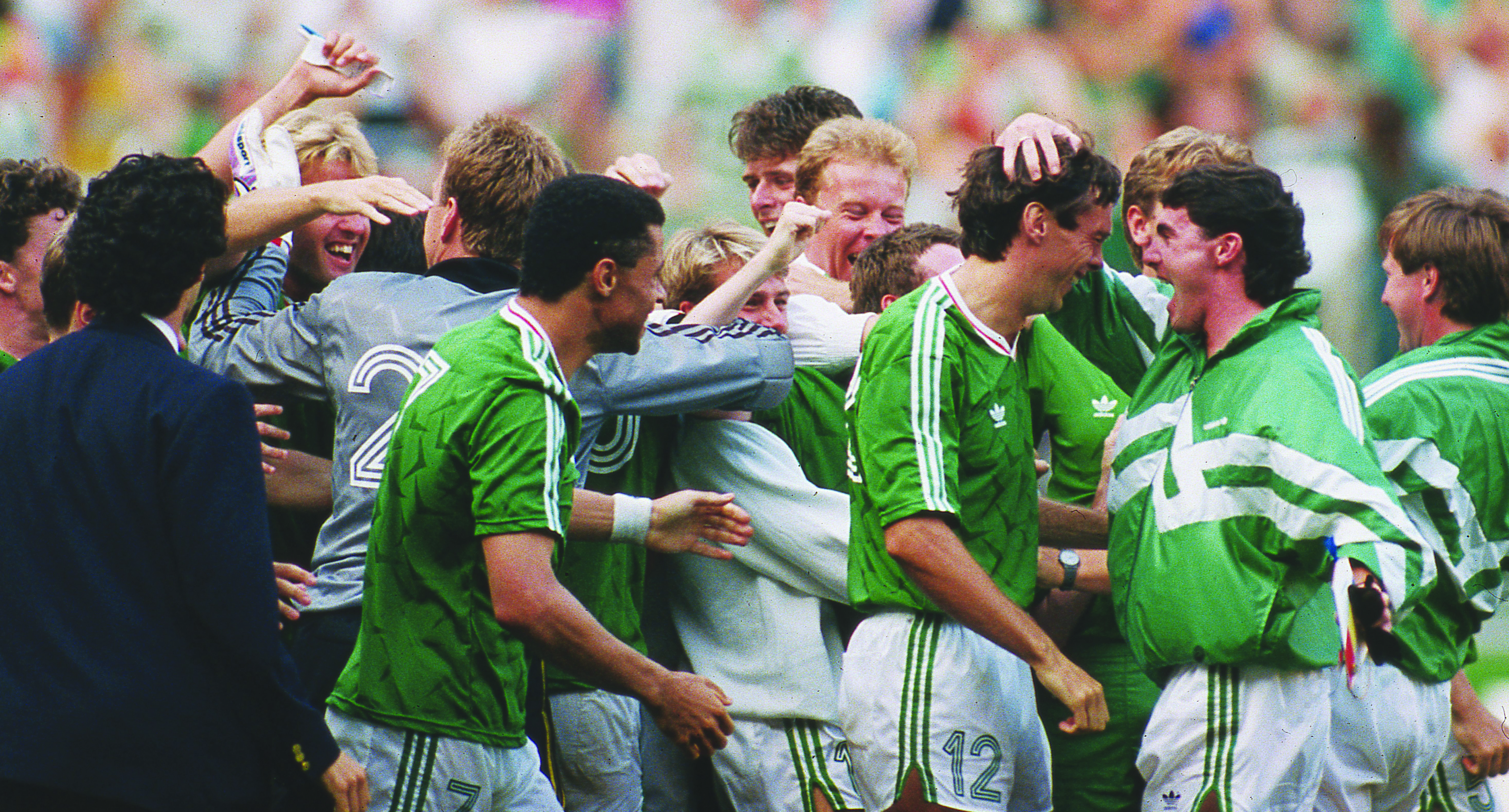
Houghton would provide another beautiful moment at the Giants Stadium in '94 when again he struck early for the only goal of the game, as Ireland gained a measure of revenge for the quarter-final defeat to Italy four years previous.
However, this was the beginning of the end for that group of players and for Charlton, so it was under the guidance of Mick McCarthy that Ireland would return to the biggest stage of them all eight years later.
The 2002 World Cup in Japan and South Korea would begin with the infamous fall-out between McCarthy and Roy Keane that would see the team captain return home before a ball was kicked, yet despite this early gloom, again there were some magical moments to savour.
With time virtually up against Germany in the second game, Ireland trailed 1-0 and defeat would have left them staring elimination in the face...
“One that also sticks is Ibaraki in 2002 when the late goal from Robbie Keane drew with Germany and that turned out to be the only goal that Germany conceded on their way to the final of that World Cup - they were wonderful days,” Hamilton reflected.
“Then there was France in the (2016) European Championships and that was very interesting as Northern Ireland were there as well and the way the fans got on together, supported each other and were interested in how it was going for the other team, was an education almost.”
Hamilton doing what he does best in the commentary box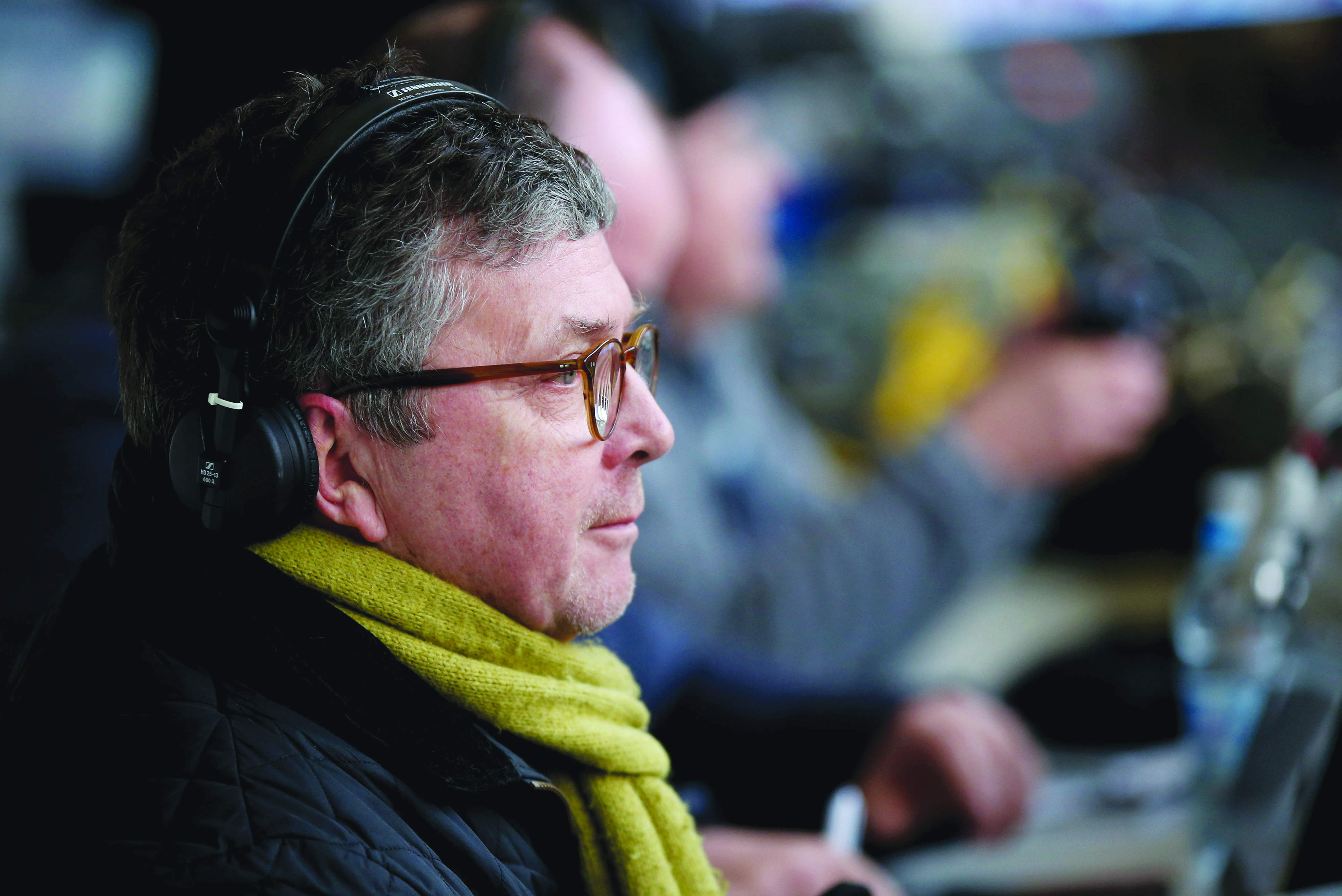
Yet, it is not just soccer that Hamilton has provided the backdrop to as his unique skills easily transferred to a host of other sports.
That background in rugby would see him on comms for what was another momentous day in Irish sport in 2000 when on March 18, a young Brian O’Driscoll marked his arrival as a superstar of world rugby when scoring a hat-trick at the Stade de France as Ireland defeated the French on their own turf for the first time in many years.
“They won in the Stade Colombes in the '60s but never won when France played their rugby at the Parc des Princes, but then they won for the first time in 30-odd years when O’Driscoll was only 21 and scored the hat-trick.
“That just happened to be my gig that day because I was used to rugby - it was terrific and one of those moments.
“I remember after the game, Tommy Gorman, who was the Northern Editor for RTÉ and recently retired, but was Europe Editor at the time and had been in Paris as Ireland were playing. He was a news man, not a sports man, but I was down doing post-match interviews and he said: ‘Come on and we’ll go into the dressing room’. I said we can’t do that - the news man assuming you can just go anywhere - but he said: ‘no; you must come in because you are the voice of this match and these guys will be watching it for years to come’. I went in and was very well received but it was Tommy who took me in.”
Outside of Irish sport there have also been many golden moments and the Olympic Games remains the pinnacle of sport, not just for athletes, but for those calling the action.
Hamilton was first involved in Olympic broadcasting back at the Moscow games in 1980 and while he has worked on a host of events, one in particular remains his favourite.
“It would be the Olympic Games in '88 and the Ben Johnson-Carl Lewis 100-metre final in Seoul.
“We all know that ended badly (with Johnson failing a post-race drug test) but when it was actually happening, it was sensational.
“I’ve always had a soft spot for those 100-metre commentaries I’ve done because there is no room for error. They are over in 10 seconds, and you might get 70 words out if you’re lucky, so they have to be completely right and I have been very fortunate to do Usain Bolt’s three 100-metres as well. They are up there as the 100-metres is always a big deal.”
Merrion Press publisher Conor Graham with George Hamilton and Ray Houghton at last night's fantastic launch of George's memoir, The Nation Holds Its Breath, in Waterstones Belfast. Thanks @HamiltonRTE, @RayHoughton8 and @Wstonesbelfast!https://t.co/X6Y8RJ8XQp pic.twitter.com/AWoBLSmSbZ
— Merrion Press (@MerrionPress) November 19, 2021
The ability to put the action into words, whether over 90 minutes or 10 seconds requires not just a unique skillset, but also hard work.
Hours upon hours of research is needed to garner the facts and stats required that may or may not be needed on any given day and Hamilton is a man who learnt from one of the best.
Last Thursday, Houghton - who has sat alongside Hamilton as co-commentator - gave an insight into just what his colleague and friend does to prepare for any game.
“One thing from working with a number of commentators, they call themselves nerds for a reason - the hours they put into that one game is incredible,” he noted.
“As co-commentators, we just turn up and write down the names because we don’t know how the game is going to go.
“We are there to evaluate and tell you what is happening. We don’t need to worry about stats - that’s their job and they have these bundles and bundles of stats.
“He learned this from (famed Scottish rugby commentator) Bill McLaren who walked him up and told him to always have loads of stats. When he asked why, Bill said: ‘because you never know when you might need to use them’. The work put in is incredible and they do it to an unbelievable level.”
An unbelievable level is what has typified George Hamilton’s career in sports broadcasting and his knack of saying the right thing at the right time has made his commentary just as iconic as the moments he described.
His autobiography charts that journey in full from the Cregagh Road to Solitude and from Windsor Park to Genoa - a unique story and journey for a man who has become a national treasure.
George Hamilton: The Nation Holds Its Breath is out now priced €22.95/£19.99

